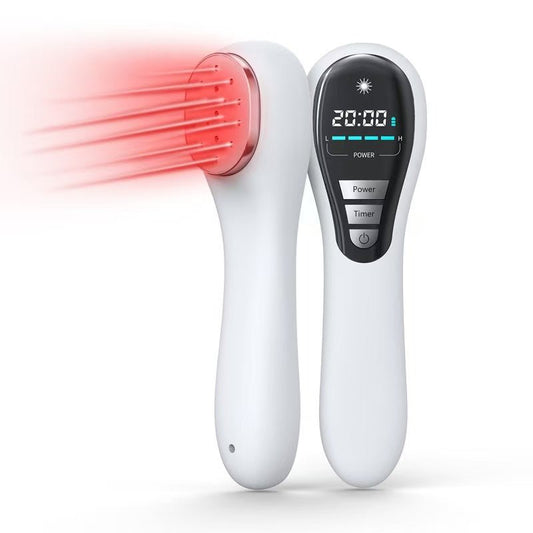
Clinic
Research
Clinic Research
LED Light Therapy Research
- Phototherapy with Light Emitting Diodes?
Within the field of dermatology, advances in the use of light emitting diodes (LEDs) have led to their clinical application for a variety of medical and cosmetic uses. Of note, one phototherapy device has demonstrated beneficial effects over a range of clinical applications. The study included a literature review of published studies. Using LEDs with frequencies of 415nm (blue), 633nm (red), and 830nm (infrared).
Conclusion:
Led light therapy is beneficial for a broad range of medical and aesthetic conditions encountered in the dermatology practice. The treatment modality displays an excellent safety profile and can be effectively used for the treatment of acne vulgaris, wound healing applications following surgical aesthetic and resurfacing procedures, actinic keratosis, squamous cell carcinoma in situ, and basal cell carcinoma. LED phototherapy is also an effective means for rejuvenating aged skin when used alone or together with a photosensitizer, such as 5-ALA, as well as post-procedural erythema. Having implemented this technology in my practice since 2009, I have also had success treating chemotherapy-induced rashes and many other difficult to treat skin conditions. More research should be performed, as this type of phototherapy shows great promise treating even more diagnostic conditions than are currently published. Learn More
- Clinical Efficacy of Self-applied Blue Light Therapy for Mild-to-Moderate Facial Acne
This study was an evaluation of the performance of self-applied, blue light, light-emitting diode therapy in the treatment of mild-to-moderate inflammatory acne on the face, concerning: 1) time to improvement and/or resolution of the number of blemishes and lesions on the face; 2) quality of skin condition; 3) occurrence and count of the number of new blemishes and lesions; and 4) ease of product use; patient comfort, wellbeing, and satisfaction during the treatment period; and safety of treatment. Subjects (N=21) were included according to the inclusion/exclusion criteria and after they had given informed consent. The blue light treatment was conducted over an eight-week period.
Conclusion:
Subjects evaluated self administration of the blue light treatment according to the device’s labeling as being safe and effective. The study showed that daily self treatment using the device for mild-to-moderate inflammatory acne reduced the number of acne lesions significantly. Moreover, the study demonstrated a significant improvement of the subjects’ skin conditions. Subjects included in the study were able to safely and effectively administer self treatment with the device and felt confident doing so. Learn More
- Skin photorejuvenation effects of light-emitting diodes (LEDs): a comparative study of yellow and red LEDs in vitro and in vivo
The researchers use normal human dermal fibroblasts (HDFs) from neonatal foreskin were cultured and irradiated in vitro by LEDs at different wavelengths (410-850 nm) and doses (0-10 J/cm(2) ). In vivo experiments were performed on the skin of hairless mice. Expression of collagen (COL) and matrix metalloproteinases (MMPs) was evaluated by semi-quantitative reverse transcription PCR (semi-qRT-PCR), western blotting and a procollagen type I C-peptide enzyme immunoassay (EIA). Haematoxylin and eosin and Masson trichrome stains were performed to evaluate histological changes.
Conclusion:
In HDFs, COL I was upregulated and MMP-1 was downregulated in response to LED irradiation at 595 ± 2 and 630 ± 8 nm. In the EIA, a peak result was achieved at a dose of 5 J/cm(2) with LED at 595 ± 2 nm. In vivo, COL I synthesis was upregulated in a dose-dependent manner to both 595 and 630 nm LED irradiation, and this effect was prolonged to 21 days after a single irradiation with a dose of 100 J/cm(2) . These histological changes were consistent with the results of semi-qRT-PCR and western blots.
Specific LED treatment with 595 ± 2 and 630 ± 8 nm irradiation was able to modulate COL and MMPs in skin, with the effects persisting for at least 21 days after irradiation. These findings suggest that yellow and red LEDs might be useful tools for skin photorejuvenation. Learn More
-
Best FDA Approved Led Face Mask Lux for Skin Rejuvenation
Regular price $199.00 USDRegular priceUnit price / per$299.00 USDSale price $199.00 USDSale -
Advanced Led Therapy Light Mask
Regular price $299.00 USDRegular priceUnit price / per$399.00 USDSale price $299.00 USDSale -
Led Energy Comb Red Light Therapy for Hair Loss
Regular price $169.00 USDRegular priceUnit price / per$199.00 USDSale price $169.00 USDSale -
HD-Cure Cold Laser Human/Vet Device for Joint and Muscles Pain Relief
Regular price $249.00 USDRegular priceUnit price / per$319.00 USDSale price $249.00 USDSale








